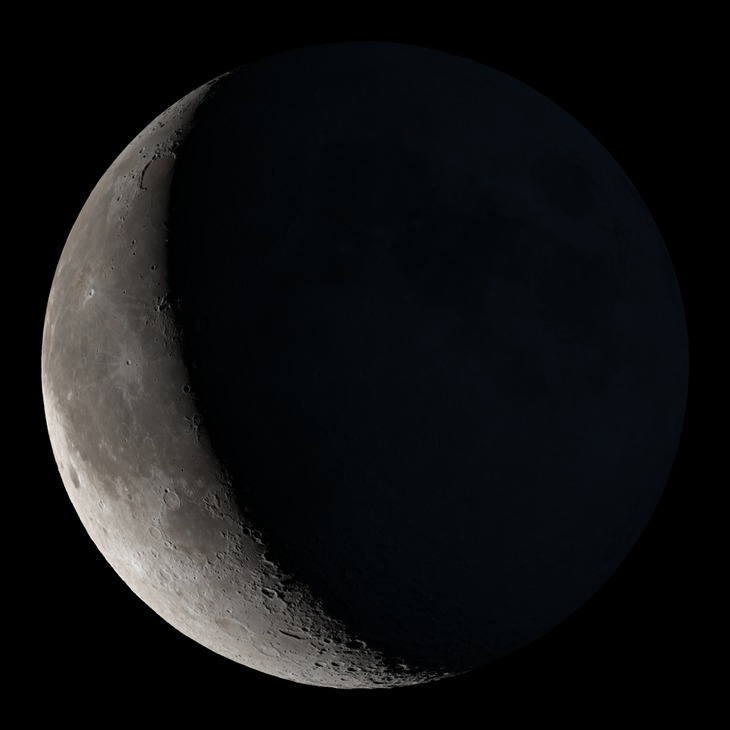
Here's how we can create a video of the moon in just a few lines of python code!

Here's how we can create a video of the moon in just a few lines of python code!
<video preload="auto" autoplay="autoplay" loop="loop" style="width: 600px; height: 600px;">
<source src="http://i.imgur.com/29P2k8Z.mp4" type="video/mp4"></source>
</video>
Or you can check out the full code on my Github.
Using this NASA visualisation we can check what the moon will look like on a given day.

By opening the output image in a new tab, we see the image is located at path:https://svs.gsfc.nasa.gov/vis/a000000/a004400/a004442/frames/730x730_1x1_30p/moon.5108.jpg
Replacing the last number in the URL (5108) with another number, 0001, we can view the first image:

We want to write some python which downloads and saves one of these images. First, we can store the URL as a string:
imageNumber = "0001"
URL = "https://svs.gsfc.nasa.gov/vis/a000000/a004400/a004442/frames/730x730_1x1_30p/moon.{}.jpg".format(imageNumber)
Now we can use the urllib module to download this image to a folder we have created out.
from urllib import request
request.urlretrieve(URL, 'out/image0001.jpg')
We can now generalise this by creating a python function which takes an input imageNumber and outputdirectory:
def getImage(imageNumber, directory):
URL = "https://svs.gsfc.nasa.gov/vis/a000000/a004400/a004442/frames/730x730_1x1_30p/moon.{}.jpg".format(imageNumber)
saveName = directory + imageNumber + ".jpg"
request.urlretrieve(URL, saveName)
return
Now we can easily download image 0999 into folder out with getImage("0999", 'out/').
We wish to download all 8761 images to create a video with high frames per second. Before the downloading, first we write a small function which assists with the '0001' formatting style (moon.1.jpg does not exist!).
We want a function which takes an integer input n, and then adds some leading 0s. The number of zeros required is equal to 4 minus the number of digits, the length of the number as a string i.e 4 - len(str(n)).
def addZeros(imageNumber):
numAdd = 4 - len(str(imageNumber))
return "0" * numAdd + str(imageNumber)
Now we can download image 3 using getImage(addZeros(3), 'out/').
Or, more easily, we can use Python's string formatting:
def addZeros(imageNumber):
return '{:04d}'.format(imageNumber)
which will add leading zeros up to 4 digits. (Thanks /u/flutefreak7)
From here we can download all 8761 images:
for imageNumber in range(1, 8761):
print("Downloading image #{}".format(imageNumber))
getImage(addZeros(imageNumber), 'out/')
These images might take a while to download!
Once all the images have been downloaded we can create a video using the imageio module. First we create a list containing all the file locations. We can do this in a traditional loop:
files = []
for imageNumber in range(1, 8761):
files.append('out/' + addZeros(imageNumber) + '.jpg')
or we can do this in a more pythonic way using list comprehension:
files = ['out/{}.jpg'.format(addZeros(imageNumber))
for imageNumber in range(1, 8761)]
Now we can load all these images with imageio in a similar way:
import imageio
images = [imageio.imread(file) for file in files]
Finally, we can create a gif using:
imageio.mimsave('moonAnimation.gif', images)
Or we can create an HD video using ffmpeg:
$ ffmpeg -r 25 -i images/%04d.jpg -vb 20M moon.mp4
<iframe width="777" height="720" src="https://www.youtube.com/embed/Cz1ED7FW4dk" frameborder="0" allow="accelerometer; autoplay; encrypted-media; gyroscope; picture-in-picture" allowfullscreen></iframe>